When I painted this series in the year 2022, I tried the following empathy exercise:
“Is this the window of my house?”
A refugee asks himself, who has returned after a while and discovers that the house he lived in was destroyed in the war. How many beautiful moments did he live in that house!? How many sunrises has he seen through this window of his room!?… All these are memories and shards of broken glass…
How can that man feel in such a situation?
I wonder how many people experience such a tragedy?
Technique: watercolor on Lanaquarelle paper, sizes: 56×76 cm, 28×38 cm, 2022
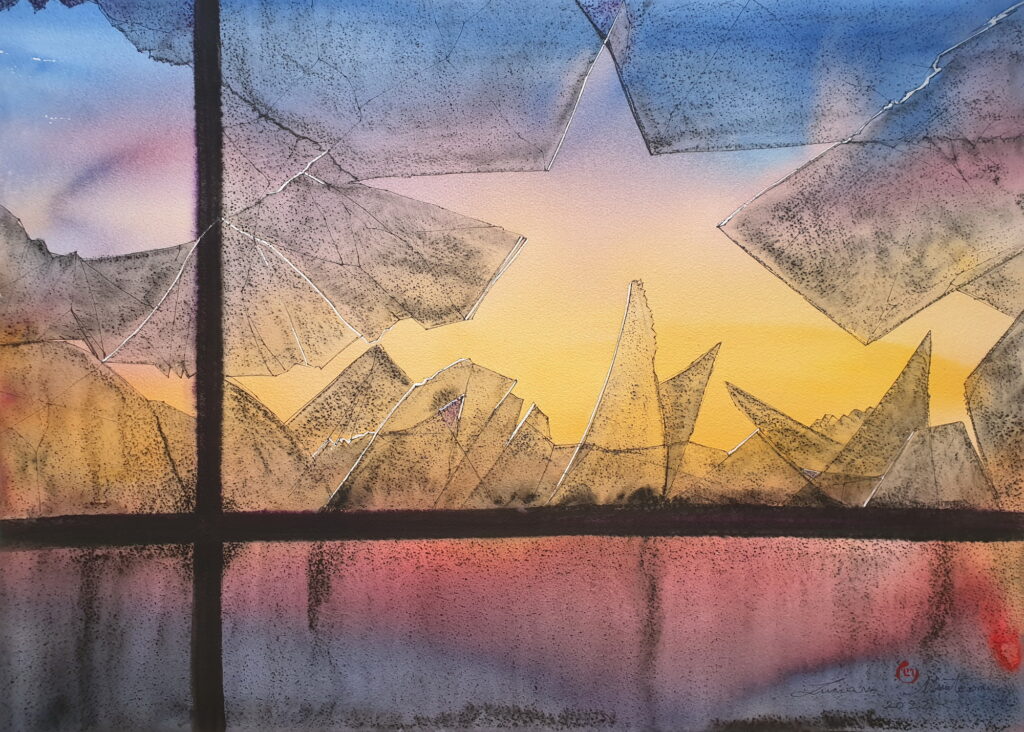
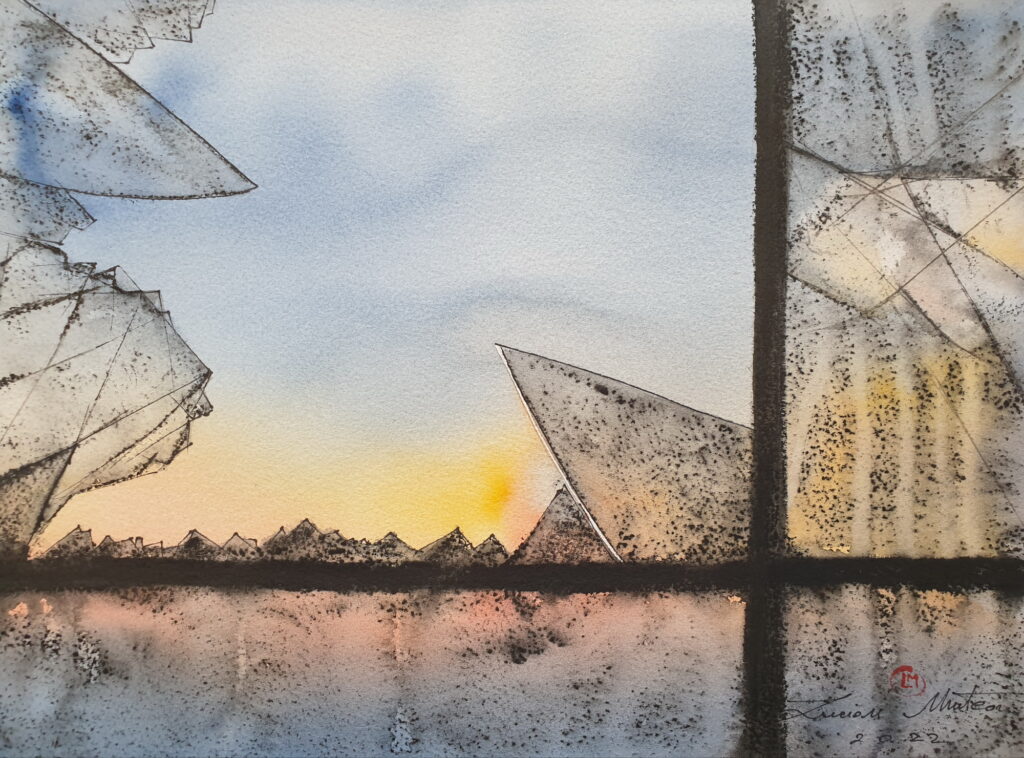
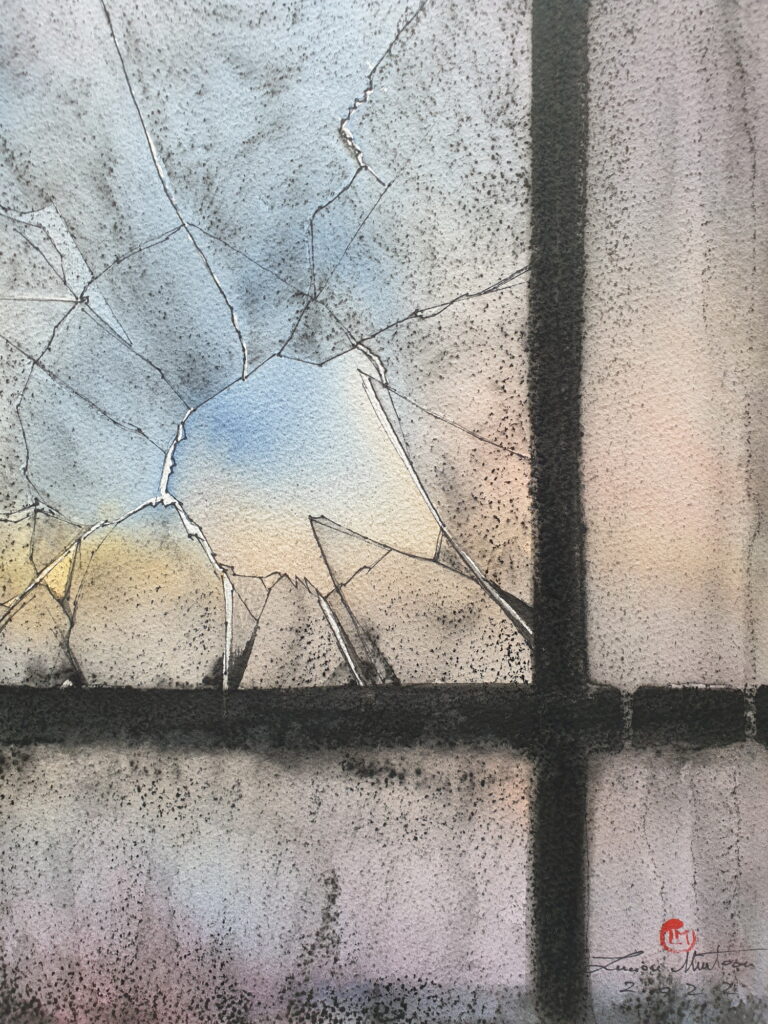
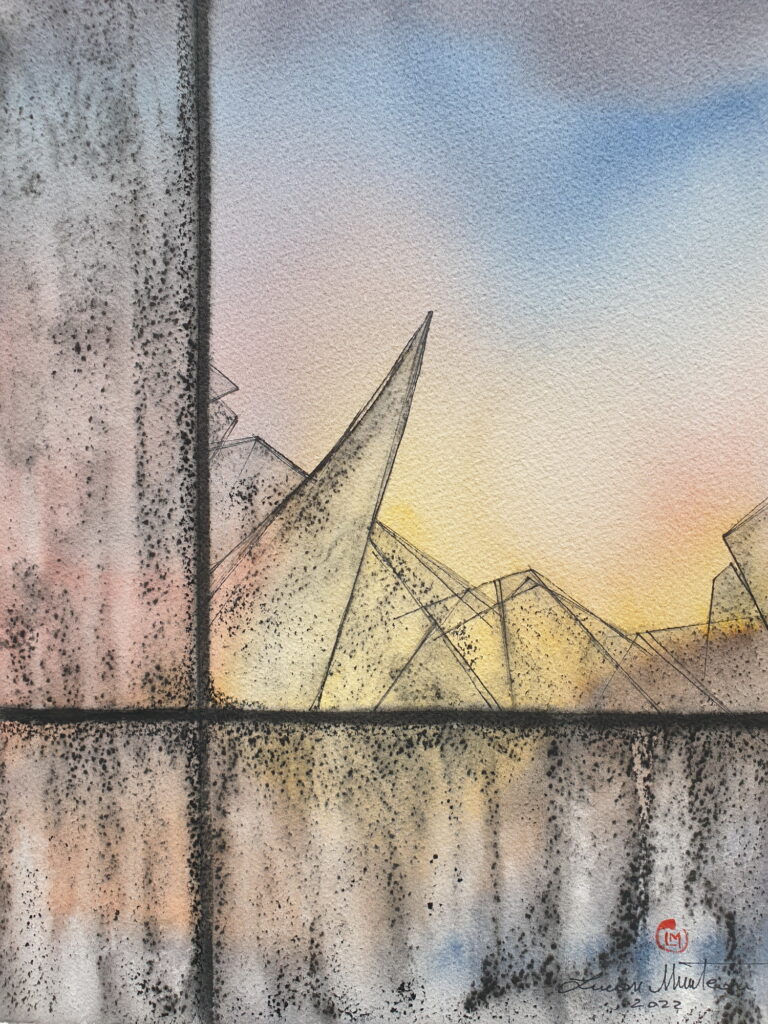
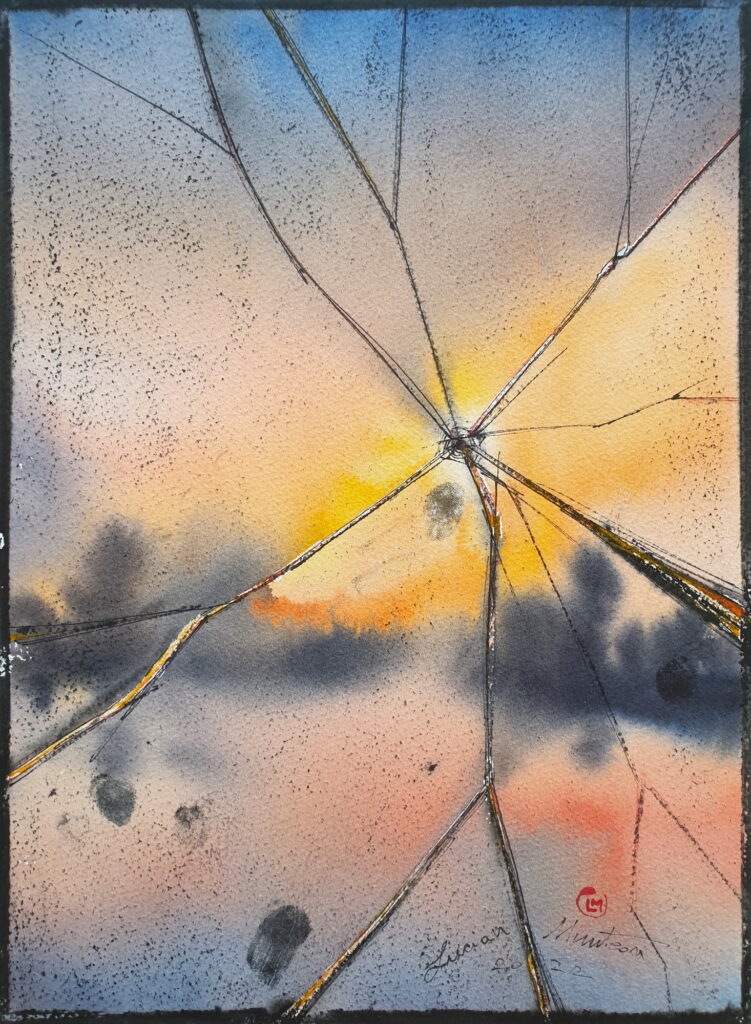
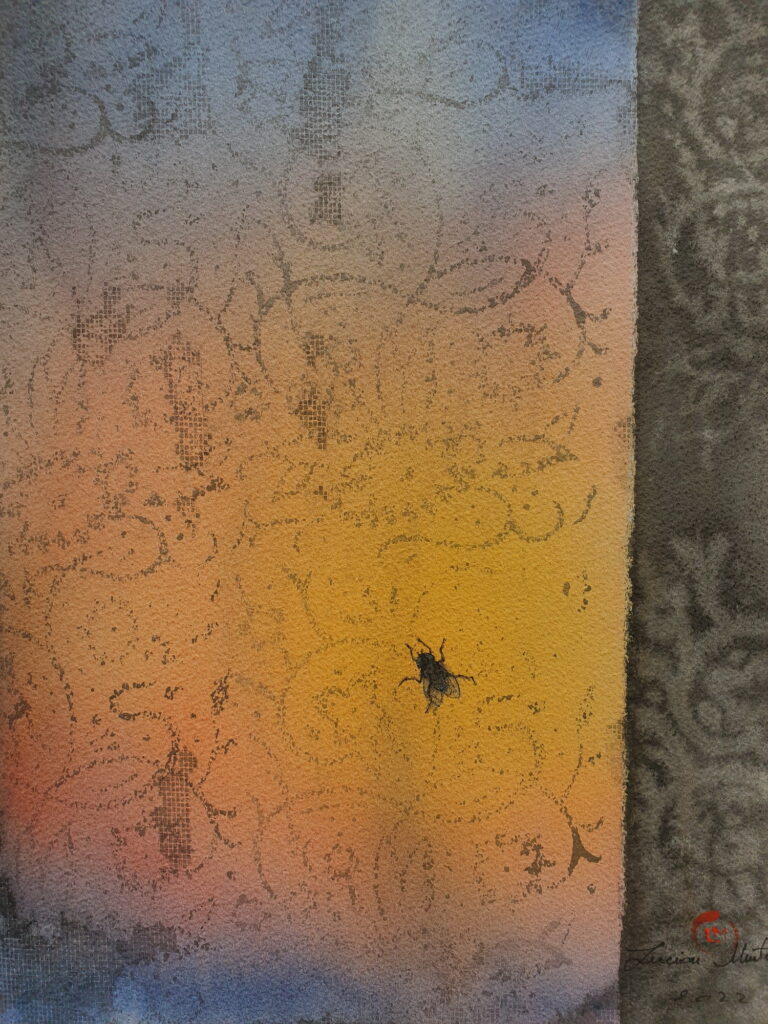
Also these watercolors can refer to:
Parable of the broken window
When a child accidentally smashes a window, and then it has to be replaced, does this accident constitute a benefit to society, due to the economic activity of repairing and replacing the window?
The parable of the broken window was introduced by French economist Frédéric Bastiat in his 1850 essay “That Which Is Seen, and That Which Is Not Seen” (“Ce qu’on voit et ce qu’on ne voit pas”) to illustrate why destruction, and the money spent to recover from destruction, is not actually a net benefit to society.
https://en.wikipedia.org/wiki/Parable_of_the_broken_window
Broken windows theory
In criminology, the broken windows theory states that visible signs of crime, antisocial behavior and civil disorder create an urban environment that encourages further crime and disorder, including serious crimes. The theory suggests that policing methods that target minor crimes, such as vandalism, loitering, public drinking and fare evasion, help to create an atmosphere of order and lawfulness.
https://en.wikipedia.org/wiki/Broken_windows_theory

